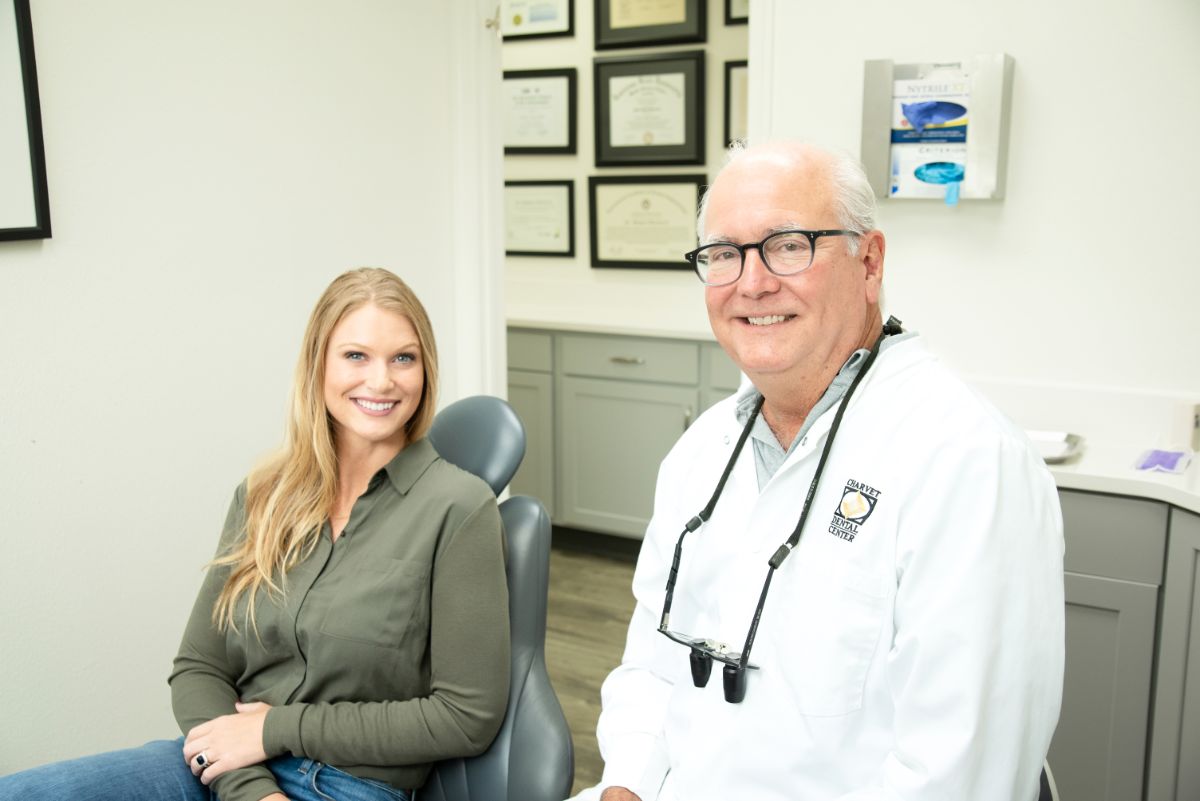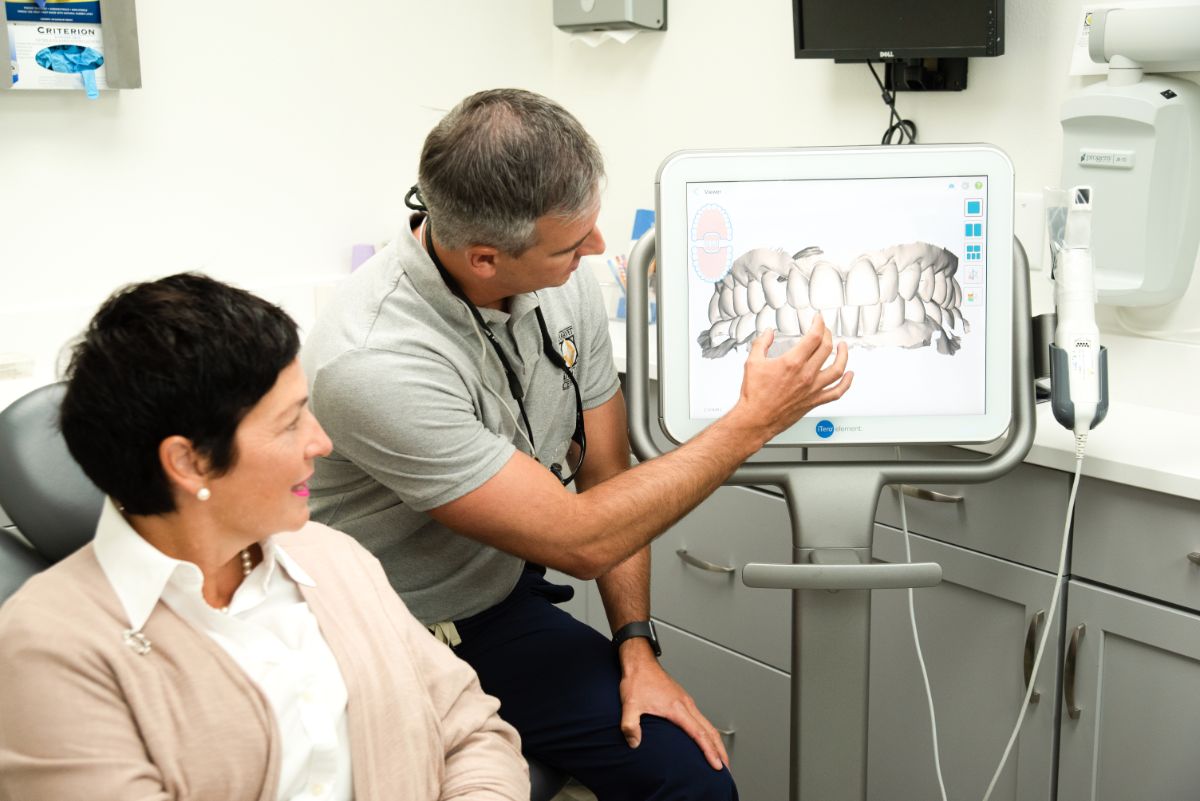Do you hide your smile because you feel like there’s too much gum tissue compared to your teeth? If so, you’re not alone. “Gummy” smiles, also known as an excessive gingival display, show a disproportionate amount of gum tissue. This common condition affects the cosmetic appearance of your smile and can leave you feeling insecure or self-conscious. It can be caused by several different things, including a tooth or jaw development problem, a misaligned bite, hyperactive upper lip, and more. But can it be corrected?
The answer to that is an emphatic yes! Whether you’re interested in fixing a gummy smile for aesthetic reasons or want to tackle any underlying issues behind it, Charvet Dental Center is here to help. We’ve been making Metairie smile for more than 50 years—now it’s your turn! There are many possible explanations for this condition and several potential solutions. To understand more about what can cause a gummy smile and how our expert team can treat it, keep reading below!
What makes a smile “gummy”?
Technically speaking, a smile is defined as “gummy” when 4 millimeters of gum tissue shows. For reference, that’s just over 1/8 of an inch. There are many different reasons for an excess of gum tissue to form, from genetics to teeth or jaw issues. Working with our doctors to understand the root cause of your condition will ensure you receive the best treatment for your unique smile! Here are some of the most common causes of a gummy smile.
Your gums—Teeth that appear too short in relation to your gums may be covered by an excess of gum tissues.
Your teeth—The teeth can sometimes emerge in the mouth at different heights, with some growing in shorter than others. A tooth grinding habit can also wear the teeth down and cause them to become shorter over time. This can lead to compensatory eruption, with the teeth actually slowly moving outward from the gum to compensate for the extra wear and tear. All three of these scenarios can give the smile a gummy appearance.
Your upper lip—The average upper lip moves 6 to 8 millimeters from its normal resting position to achieve a full smile. A hypermobile upper lip rises much further than that, revealing additional gum tissue.
Your jaw—Sometimes the upper jaw, or maxilla, is too long for the face. This condition is referred to as Vertical Maxillary Excess (VME) and can be treated with orthognathic surgery.
How can a gummy smile be treated?
Your smile line describes the teeth that are showing when you are smiling. This is determined by several factors, including the shape and size of your lips and teeth, your facial muscles, and your gum tissue. The most optimal smile line will be one that reveals the least amount of gum tissue possible. We want to see the visible gum tissue have balanced and even contours that are in harmony with the upper lip. This is a big reason why many patients with a gummy smile feel insecure about it.
Aesthetics aren’t always the only thing affected by excess gum tissue, however. If underlying dental conditions are present, such as abnormal tooth eruption or jaw development, you may also have a misaligned bite that can impact your long-term oral health. Let’s look at some of the treatments available to address a gummy smile!
Scaling and root planing
A gummy smile caused by inflamed or infected gums can benefit from a deep professional dental cleaning called scaling and root planing. This advanced cleaning reaches deep into the gum pockets around each tooth to remove bacteria and help any infection heal. Once the infection is gone, inflammation will normally subside. The gummy appearance of the smile often disappears with it.
Veneers or crowns
If there aren’t any major underlying issues causing a patient’s gummy smile, veneers or crowns can be good non-invasive treatment options. These are attached to the teeth to make them appear longer, larger, and more proportionate to the gums.
Gum lift or crown lengthening
If there’s too much gum tissue covering the teeth, a gum lift or crown lengthening may be the best treatment option. A gum lift procedure removes some of the tissue around the teeth and restructures the gum line to be higher. The end result will show more teeth than gums. If there’s an abundance of gum tissue present, we may recommend a crown lengthening treatment. This not only restructures the gums but also changes the bone around the teeth.
Lip lowering
Contrary to its name, this treatment doesn’t literally lower your lip. Instead, a small section of gum tissue under the upper lip is removed before stitching the top and bottom together. This creates a shorter lip that isn’t able to rise as high as it used to, covering more of the gum tissue and reducing the appearance of a gummy smile.
Botox can also be helpful for hyperactive upper lips! Injecting Botox into the upper lip will limit its range of movement, reducing the amount of gum tissue shown when the patient smiles. This minimally invasive solution wears off in about 3-6 months.
Orthodontics
If a gummy smile is caused by a bad bite, orthodontic treatment like braces or clear aligners may help. Correcting misalignments can reduce the amount of gum tissue that shows when smiling, laughing, or talking. It can also alleviate any associated symptoms like jaw and neck pain, headaches, and more.
Get the confident smile you deserve with Charvet Dental Center
A gummy smile won’t always be due to an underlying dental issue that needs to be fixed. For simple excess gum tissue, treatments like crowns, veneers, and crown lengthening are minimally invasive and help the gums look more proportionate to your teeth. With a range of permanent and temporary solutions available, we can find the perfect treatment for you and your unique smile!
If you’re interested in correcting your gummy smile or treating the underlying issues causing it, our expert team will be happy to walk you through your options! Get in touch today to schedule a consultation and take the first step towards the best treatment for you.
 Schedule Now
Schedule Now


